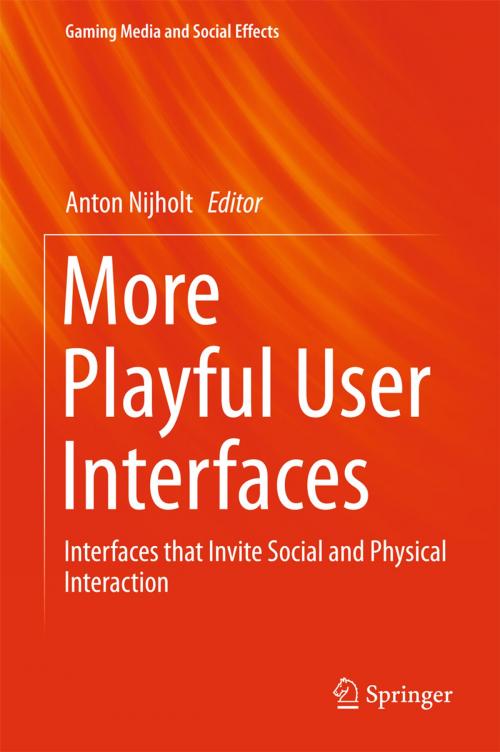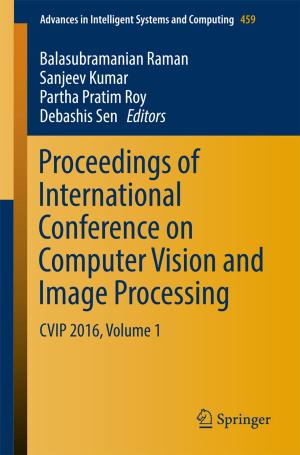More Playful User Interfaces
Interfaces that Invite Social and Physical Interaction
Nonfiction, Computers, Advanced Computing, Programming, User Interfaces, Artificial Intelligence, General Computing| Author: | ISBN: | 9789812875464 | |
| Publisher: | Springer Singapore | Publication: | May 18, 2015 |
| Imprint: | Springer | Language: | English |
| Author: | |
| ISBN: | 9789812875464 |
| Publisher: | Springer Singapore |
| Publication: | May 18, 2015 |
| Imprint: | Springer |
| Language: | English |
This book covers the latest advances in playful user interfaces – interfaces that invite social and physical interaction. These new developments include the use of audio, visual, tactile and physiological sensors to monitor, provide feedback and anticipate the behavior of human users. The decreasing cost of sensor and actuator technology makes it possible to integrate physical behavior information in human-computer interactions. This leads to many new entertainment and game applications that allow or require social and physical interaction in sensor- and actuator-equipped smart environments. The topics discussed include: human-nature interaction, human-animal interaction and the interaction with tangibles that are naturally integrated in our smart environments. Digitally supported remote audience participation in artistic or sport events is also discussed. One important theme that emerges throughout the book is the involvement of users in the digital-entertainment design process or even design and implementation of interactive entertainment by users themselves, including children doing so in educational settings.
This book covers the latest advances in playful user interfaces – interfaces that invite social and physical interaction. These new developments include the use of audio, visual, tactile and physiological sensors to monitor, provide feedback and anticipate the behavior of human users. The decreasing cost of sensor and actuator technology makes it possible to integrate physical behavior information in human-computer interactions. This leads to many new entertainment and game applications that allow or require social and physical interaction in sensor- and actuator-equipped smart environments. The topics discussed include: human-nature interaction, human-animal interaction and the interaction with tangibles that are naturally integrated in our smart environments. Digitally supported remote audience participation in artistic or sport events is also discussed. One important theme that emerges throughout the book is the involvement of users in the digital-entertainment design process or even design and implementation of interactive entertainment by users themselves, including children doing so in educational settings.















